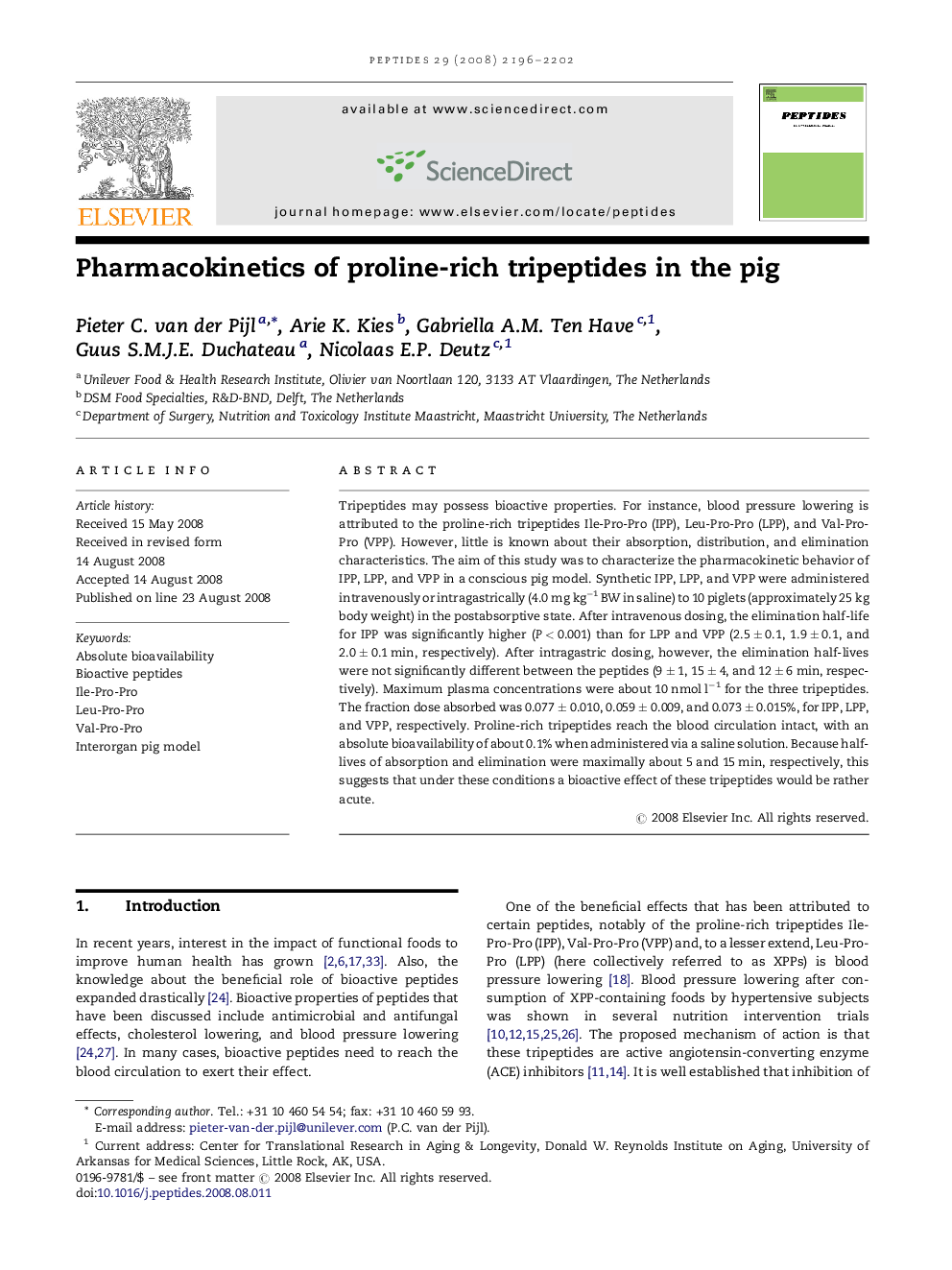| Article ID | Journal | Published Year | Pages | File Type |
|---|---|---|---|---|
| 2008111 | Peptides | 2008 | 7 Pages |
Tripeptides may possess bioactive properties. For instance, blood pressure lowering is attributed to the proline-rich tripeptides Ile-Pro-Pro (IPP), Leu-Pro-Pro (LPP), and Val-Pro-Pro (VPP). However, little is known about their absorption, distribution, and elimination characteristics. The aim of this study was to characterize the pharmacokinetic behavior of IPP, LPP, and VPP in a conscious pig model. Synthetic IPP, LPP, and VPP were administered intravenously or intragastrically (4.0 mg kg−1 BW in saline) to 10 piglets (approximately 25 kg body weight) in the postabsorptive state. After intravenous dosing, the elimination half-life for IPP was significantly higher (P < 0.001) than for LPP and VPP (2.5 ± 0.1, 1.9 ± 0.1, and 2.0 ± 0.1 min, respectively). After intragastric dosing, however, the elimination half-lives were not significantly different between the peptides (9 ± 1, 15 ± 4, and 12 ± 6 min, respectively). Maximum plasma concentrations were about 10 nmol l−1 for the three tripeptides. The fraction dose absorbed was 0.077 ± 0.010, 0.059 ± 0.009, and 0.073 ± 0.015%, for IPP, LPP, and VPP, respectively. Proline-rich tripeptides reach the blood circulation intact, with an absolute bioavailability of about 0.1% when administered via a saline solution. Because half-lives of absorption and elimination were maximally about 5 and 15 min, respectively, this suggests that under these conditions a bioactive effect of these tripeptides would be rather acute.
